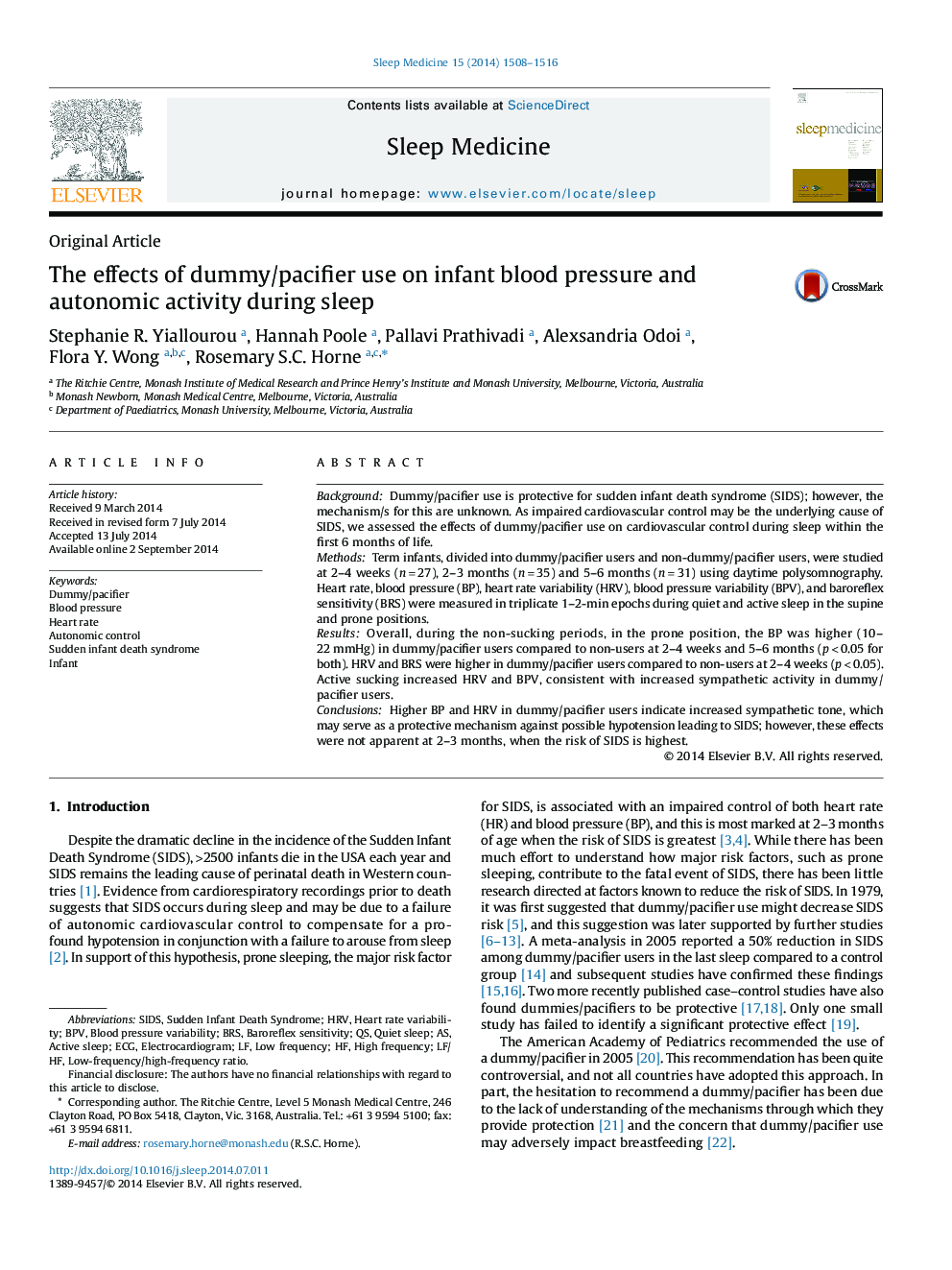| کد مقاله | کد نشریه | سال انتشار | مقاله انگلیسی | نسخه تمام متن |
|---|---|---|---|---|
| 3176015 | 1200240 | 2014 | 9 صفحه PDF | دانلود رایگان |
• Dummy/pacifier use during sleep in infants increases blood pressure in the prone position.
• Active sucking in dummy/pacifiers users increases autonomic activity.
• Increased autonomic activity and blood pressure may be protective for sudden infant death syndrome.
BackgroundDummy/pacifier use is protective for sudden infant death syndrome (SIDS); however, the mechanism/s for this are unknown. As impaired cardiovascular control may be the underlying cause of SIDS, we assessed the effects of dummy/pacifier use on cardiovascular control during sleep within the first 6 months of life.MethodsTerm infants, divided into dummy/pacifier users and non-dummy/pacifier users, were studied at 2–4 weeks (n = 27), 2–3 months (n = 35) and 5–6 months (n = 31) using daytime polysomnography. Heart rate, blood pressure (BP), heart rate variability (HRV), blood pressure variability (BPV), and baroreflex sensitivity (BRS) were measured in triplicate 1–2-min epochs during quiet and active sleep in the supine and prone positions.ResultsOverall, during the non-sucking periods, in the prone position, the BP was higher (10–22 mmHg) in dummy/pacifier users compared to non-users at 2–4 weeks and 5–6 months (p < 0.05 for both). HRV and BRS were higher in dummy/pacifier users compared to non-users at 2–4 weeks (p < 0.05). Active sucking increased HRV and BPV, consistent with increased sympathetic activity in dummy/pacifier users.ConclusionsHigher BP and HRV in dummy/pacifier users indicate increased sympathetic tone, which may serve as a protective mechanism against possible hypotension leading to SIDS; however, these effects were not apparent at 2–3 months, when the risk of SIDS is highest.
Journal: Sleep Medicine - Volume 15, Issue 12, December 2014, Pages 1508–1516
